Why is it necessary to teach young children to swim?
THAI StemLife informs
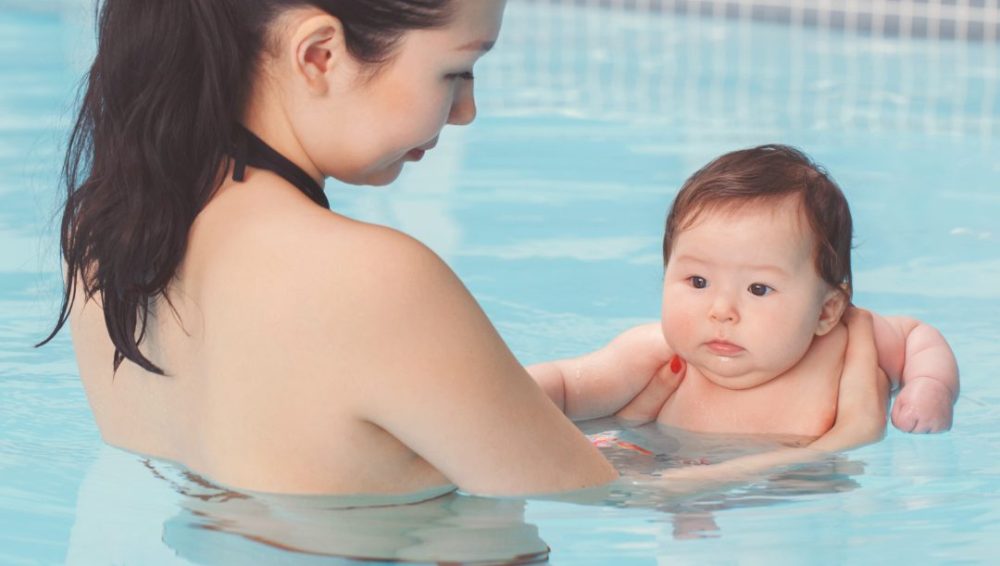
When a child drowns, they will experience a lack of oxygen and the heart stops, which is a primary factor causing the brain to lack oxygen.
If the body lacks oxygen for 5 minutes, brain cells will begin to die, leading to coma and eventually death. Therefore, basic swimming skills are important for Your Child to learn.
Why is it necessary to teach young children to swim?
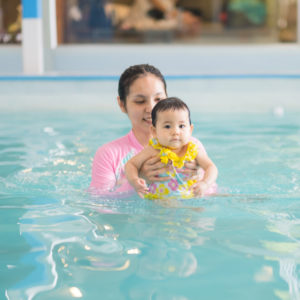
Swimming is an essential skill that children should have because drowning is one of the leading causes of death among children in Thailand. Two out of three children who die from drowning cannot swim. The Disease Control Department revealed that between 2012 and 2021, a total of 7,374 children died from drowning, averaging two per day. Analysis of the death rates among children showed that infants to 4-year-olds and children aged 5-9 had the highest death rates.
Drowning accidents occur most frequently in natural water bodies, followed by swimming pools and bathtubs. The reasons children drown include entering the water to play and playing near water bodies until accidentally falling in. Therefore, promoting swimming skills among children can provide a protective barrier for your little ones in case of unforeseen incidents.
How should you start teaching young children to swim?
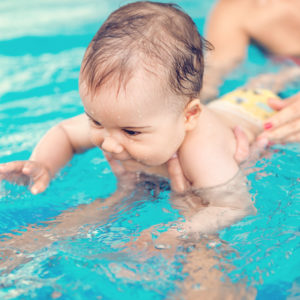
You can take Your Child to swimming lessons right from birth. However, doctors usually recommend waiting until the baby is at least 6 weeks old because the immune system of newborns is not yet strong, making them susceptible to various infections. You should choose a swimming school that does not use chlorine, has a warm water pool, or can control the water temperature to be around 32 degrees Celsius, as regular pool temperatures are too cold for infants. If it is necessary to swim in a normal pool, it’s advised to take the child out of the water every 10 minutes to warm up.
Water skills to teach young children to prepare for unexpected events include:
- Being able to float for at least 3 minutes to wait for help. The cause of drowning in children is often due to accidentally falling into the water but not being able to float to shore. Teaching a child to float on the water’s surface can significantly reduce the risk of drowning
- Being able to swim at least 15 meters to reach the shore if they fall into the water
- Using life jackets. Water travel also carries a risk of drowning for children if accidents occur. Therefore, children should be trained to properly put on and take off life jackets and learn to float while wearing them
Precautions to prevent young children from drowning

Accidents involving drowning can happen in a very short time when a guardian takes their eyes off her child. Therefore, you should pay extra attention to preventing such incidents and ensure your child does not play in the water alone. Here’s how:
- Closely supervise your child and do not let them play in the pool alone
- Create a safe environment at home, such as covering water containers, fencing off ponds, or installing safety gates
- Designate a play area for your child and use playpens to prevent them from wandering into dangerous areas
- Teach your child to swim as early as possible to equip them with survival skills
What to do if your child drowns?
Proper first aid is crucial in increasing a child’s chance of survival in drowning incidents. Here’s what to do:
- Assess the situation to determine the extent of help needed and immediately call emergency services for the safety of both the child and the rescuer
- Once the child is out of the water, lay them on a flat, dry, and safe surface and assess their condition to provide further assistance
- If the child is not breathing but has a pulse, give rescue breaths—one breath every 3-5 seconds—and re-evaluate the condition every 2 minutes
- If the child has no pulse, perform CPR. For infants under 1 year old, place two fingers in the center of the chest and press down about 4 cm (or one-third the depth of the chest). For children over 1 year old, place the palm of your hand in the center of the chest and press down about 5 cm (or one-third to one-half the depth of the chest). Perform 30 chest compressions at a rate of 100-120 compressions per minute, alternating with 2 rescue breaths, and re-evaluate the condition every 2 minutes
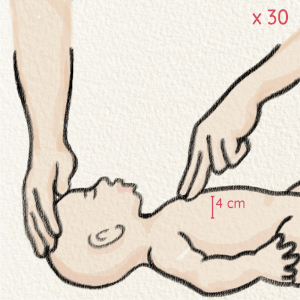
(CPR for infants under 1 year old)
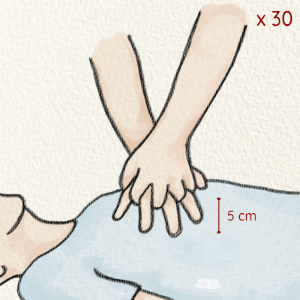
(CPR for children over 1 year old)
- When the child regains consciousness, lay them on their side and ensure their airway is clear by positioning their head with a slight upward tilt. Then, immediately take the child to the hospital
Brain injuries from drowning
The duration of drowning can result in brain injuries in children. However, research from THAI StemLife has found that stem cells from umbilical cord blood collected at birth are effective in helping to recover from brain injuries.
The opportunity for this treatment requires the use of umbilical cord blood stem cells within 48 hours after the incident. If the mother has chosen to store stem cells with THAI StemLife, the bank can deliver the child’s stem cells within 4 hours, as the company operates 24 hours a day and has a dedicated emergency hotline to reduce the risk of potential loss.
Mali’s trusted partner
THAI StemLife is Thailand’s first and largest stem cell bank and the only one with real-life-saving cases. They are the only provider in Thailand that operates 24/7 for traumatic brain injury emergencies.



